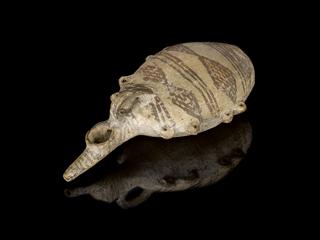
Feeding bottle
850-501 BCE
Feeding bottle, earthenware, with geometric decoration, Greek, from Cyprus, 850BC-501BC

Drawings of the 'Great Eastern' steam ship
5 sheets
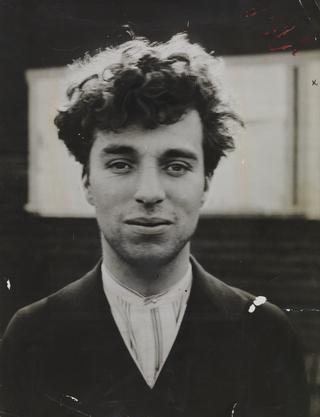
Charlie Chaplin as a young man in Hollywood
circa 1916
A photographic portrait of Charlie Chaplin as a young man, Hollywood, taken around 1916 by an unknown photographer. Sir Charles Spencer Chaplin (1899-1977) was an English comic actor and film producer and director of the silent film era.

Babbage's Analytical Engine, 1834-1871. (Trial model)
1871
Portion of the mill of the Analytical Engine with printing mechanism, designed by Charles Babbage and under construction at the time of his death, London, 1834-1871.
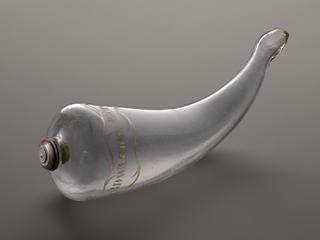
Infant's feeding bottle
1751-1900
Glass feeding bottle, infant, "Edwards's patent feeder", English, 1751-1900
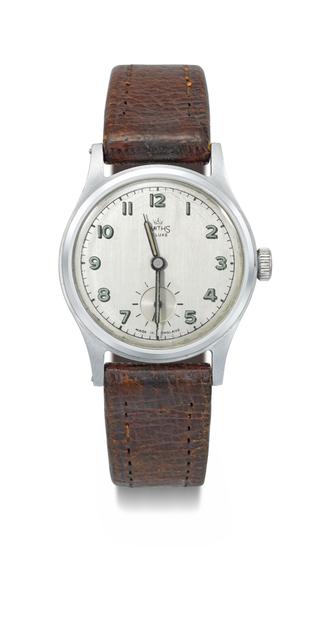
Smiths De Luxe Wristwatch Worn by Sir Edmund Hillary on His Ascent of Mount Everest 1953
1953
Wristwatch by Smiths English Clocks Ltd, Cheltenham, England, 1953. Steel waterproof case by the Dennison Watch Case Co, marked on the back 'AQUATITE, DENISTEEL BACK, 73359, CASE MADE IN ENGLAND' around 'DQ' in the centre. Silvered dial with Arabic numerals in luminous paint, and a subsidiary seconds dial at six o'clock. Signed ‘Smiths De Luxe' below twelve o'clock, and 'made in England' below the subsidiary dial. 15 jewel lever-escapement movement.
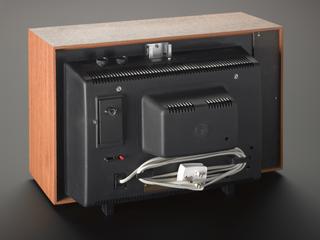
Sony 'Trinitron' Colour Television, 1969-1970
1969-1970
Sony 'Trinitron' colour television set, model type KV-1320UB, manufactured by Sony, Japan, 1969-1970. Serial No. 505704

Feeding bottle or drinking cup
Feeding bottle, or drinking cup earthenware, with spout in the form of a dogs head, Islamic
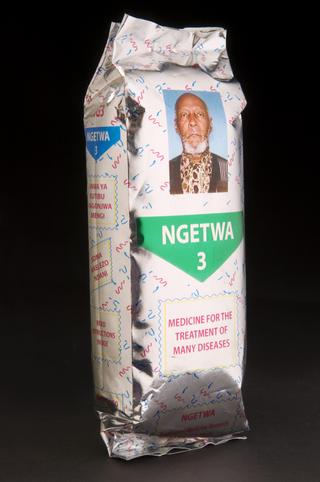
Ngetwa 3 herbal medicine
2005
Packet of Ngetwa 3 herbal medicine for 'the treatment of many diseases', Kyela, Tanzania, 2005

Philips TCD308 Mobile Telephone, 1997-2001
1997-2001
Philips Cellnet 'Diga' TCD308 mobile phone, made by Philips, France, 1997. CN: VYP09902E04442

'Memento mori' watch in the form of a skull, known as the 'Mary Queen of Scots' watch.
1780-1850
Watch signed Moysant, Blois in the shape of a skull, with outer leather travel case. The large silver case is shaped like a human skull and is pierced and also engraved all over with religious and mythological scenes as well as quotations in Latin from Horace. The mechanism, which includes a striking train, is hidden inside the skull. It has had considerable alteration and is now a conversion to lever escapement. The silver dial, which has two hands, is engraved with a scene of Saturn swallowing his children.

Alcock and Brown's Vickers Vimy Biplane
1919
Alcock and Brown's Vickers Vimy biplane.
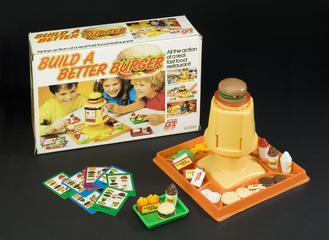
'Build a Better Burger' Game
1984-1986
Game, 'Build a Better Burger' game for 2-4 players ages 5 and over, marked 'All the action of a real fast food restaurant!', made by Action Games and Toys Ltd, Henley-on-Thames, Oxfordshire, under license from Lakeside Games (a division of Leisure Dynamic Inc, Minneapolis, Minnesota, USA), 1984-1986. Players compete to be the first to assemble a meal according to the menu card they select.

'Pedoscope' shoe-fitting X-ray viewer
1948-1953
Pedoscope, by the Pedoscope Company Limited, St. Albans, Hertfordshire, England, 1948-1953
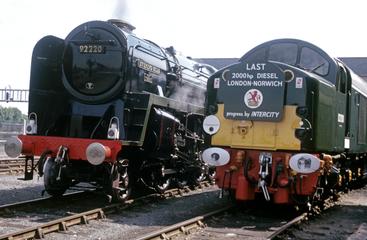
Steam locomotive, entitled Evening Star
1960
Steam locomotive and tender, British Railways, 9F class 2-10-0 No 92220 "Evening Star", designed by R.A.Riddles, built at Swindon in 1960, withdrawn in 1965.
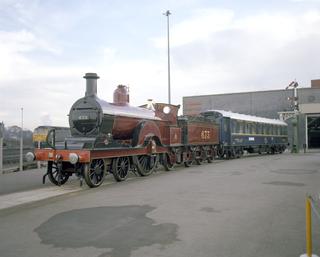
Compagnie Internationale de Wagon-Lits et de Grands Express Europeens sleeping car, 1936
1936
Railway carriage, sleeping car No 3792, Compagnie Internationale de Wagon-Lits et de Grands Express Europeens, built in 1936, withdrawn 31st December 1974. Length over buffers: 65' 6"; width 9' 1"; height 12' 7".
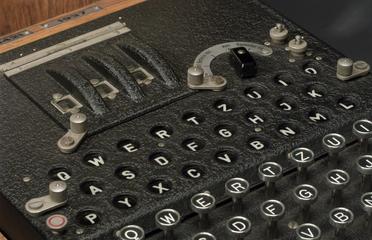
Three-ring Enigma cypher machine in oak wood transit case
1934
Three-ring Enigma cypher machine complete in oak wood transit case, together with original German battery (Serial number A6421/1937), unsigned, Germany, 1934 (see Note)
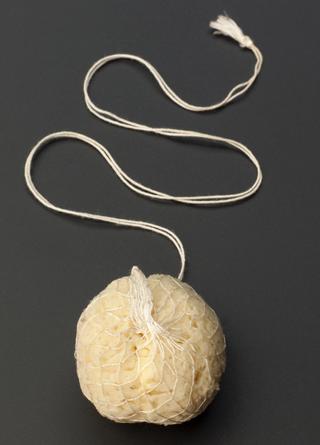
Contraceptive Sponge
1920-1960
Marine sponge, for use as vaginal pessary, possibly English, 1920-1960

Packet of 10 'Gold Flake' Cigarettes
1920-1950
Packet of 10 'Gold Flake' cigarettes by W D & H O Wills, England, 1920-1950
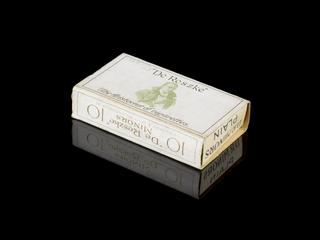
Packet of 'De Reszke Minors' Cigarettes
1920-1950
Packet of 'De Reszke' minors cigarettes by J Millhoff & Co. Ltd., Picadilly, London, 1920-1950

Southern Railway 0-6-0 Q1 class steam locomotive, No C1
1942
Steam locomotive, No C1, Q1 Class, 0-6-0, Southern Railway, designed by O V Bulleid, built at Brighton in 1942, withdrawn in 1964. Weight: 51.25 tons; length 54 feet, 10 ½ inches; driving wheel diameter: 5 feet, 1 inch

Ericsson A1018s mobile telephone, 1998-2002
1998-2002
Ericsson A1018s mobile phone, manufactured by Ericsson, Sweden, 1998-2002

Motorola 'GSM flare' mobile telephone, 1995
1995
Motorola GSM flare mobile phone, type 6200, made by Motorola, British, 1995. Pack no. S4647BBBB
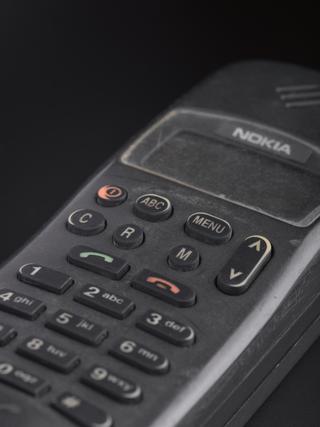
Nokia 1011 Mobile Telephone, 1992-1994
1992-1994
Nokia 1011 mobile phone, manufactured by Nokia, Germany, 1992-1994. An example of the first mass produced phone to be available for use on the GSM digital mobile networks.
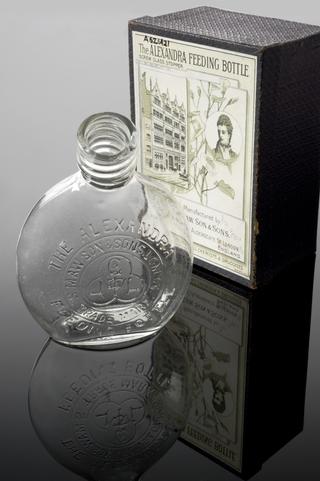
Glass feeding bottle, London, England, 1901-1918
1901-1920
Glass infant's feeding bottle in original carton, made by S. Maw, Son and Sons, London, 1901-1920

Bottle of Hunyadi Janos mineral water, unopened
1900-1920
Unopened bottle of Hunyadi Janos mineral water, by Andreas Saxlehner, Budapest, Hungary, 1900-1920
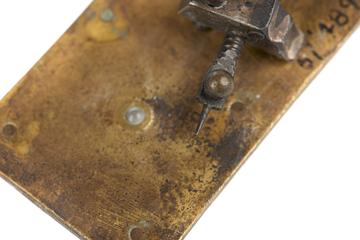
Model of Leeuwenhoek's microscope
1901-1930
Model of Leeuwenhoek's simple microscope, from Leyden
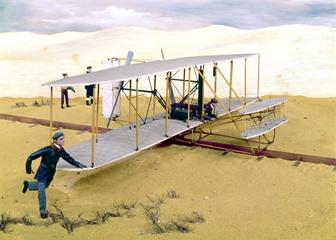
Model of Wright Flyer
1903
Model. Wright aeroplane, 1903, scale 1:10.
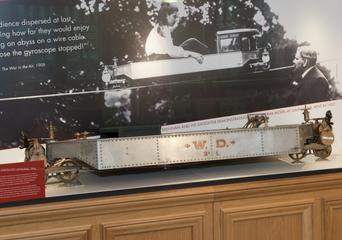
Brennan's Gyroscopic Mono-rail Car
1907
Model Gyroscopic Mono-Rail car, scale 1:8, built by Brennan.
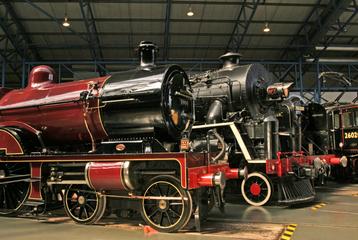
Chinese Government Railways Steam Locomotive 4-8-4 KF Class No 7
1935
Steam locomotive KF class number 7, 4-8-4, Chinese Government Railways, designed by Colonel Kenneth Cantlie, built by Vulcan Foundry in 1935 (as number 607), withdrawn in 1981.

British Railways Standard Locomotives Drawings
107 boxes
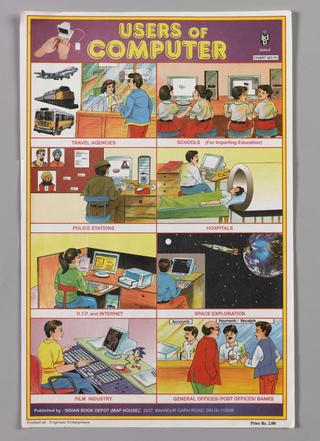
Collection of charts depicting the hardware and uses of computing, communication and domestic technology in India
240

Small orrery by Benjamin Martin
1738-1777
Small orrery on mahogany stand by Benjamin Martin, England, mid-18th century. The orrery shows seven planets (to Uranus), but Uranus is thought to be a later addition.

Siemens S6 mobile telephone, 1998-2002
1998-2002
Siemens S6 PCN P mobile phone, made by Siemens AG, Germany, 1998-2002. Serial Number: S30880-S1900-G140-1.

Motorola tone pager, 1980-1990
1980-1990
BT Tone pager Motorola 3BMXB/1, made by Motorola, 1980-1990

Edison telephone, 1879
1879
Wall telephone with Edison chalk receiver, unknown maker, probably United States, 1879.
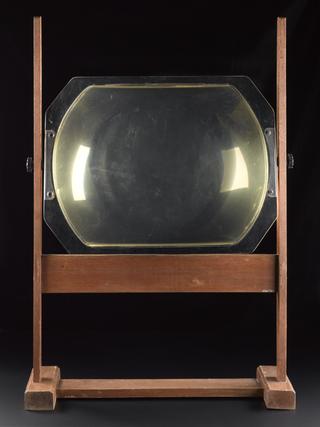
Liquid-filled Plastic Lens Television Magnifier, 1935-1965
1935-1965
'Standlens' liquid-filled plastic lens for magnifying a television picture, mounted on adjustable wooden stand, probably made by Lumex, probably British, 1935-1965
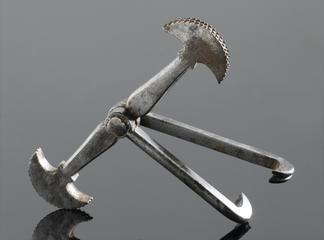
Dental Pelican for Tooth Pulling
1701-1800
Dental pelican, double ended, with 2 claws, steel, European, 1701-1800

Horn feeding cup from Edward Whymper collection
1801-1920
Horn feeding cup from Edward Whymper collection, from Quito, Ecuador, 1801-1920
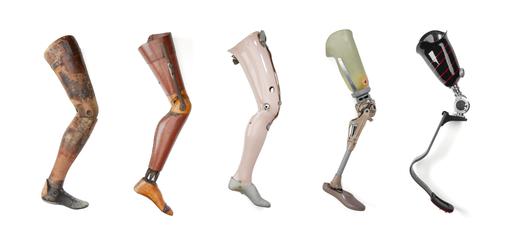
Running blade for above-knee amputee
2012
Running blade for above knee amputee, by Otto Bock Healthcare Ltd, c 2012
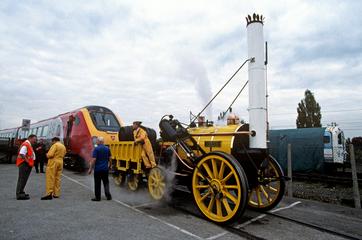
Working replica of Rocket
1979
Steam locomotive and tender, Liverpool & Manchester Railway, replica, "Rocket" 0-2-2, designed by Robert Stephenson, built 1979 to commemorate the 150th anniversary of the Rainhill Trials.

Leather truncheon used at Narborough Mental Asylum
1901-1930
Truncheon, leather covered spring, reputedly used at Narborough Mental Asylum, early 20th century
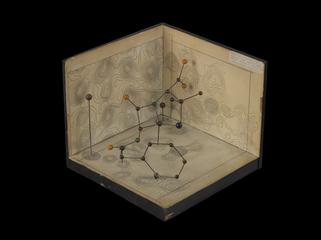
Molecular model of penicillin by Dorothy M Crowfoot Hodgkin, England, 1945
1945
Penicillin; molecular model by Dorothy Hodgkin, ca. 1945.
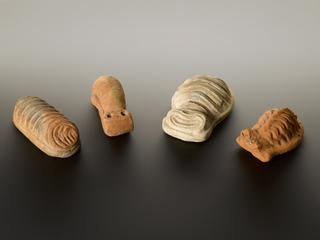
Votive uterus
200 BCE - 200 CE
Votive uterus, terracotta, Roman, 200BC-200AD
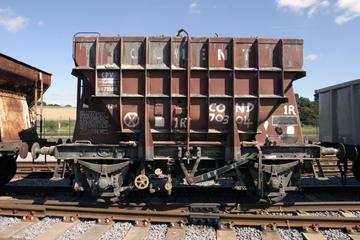
British Railways Presflo cement wagon
1961
Railway wagon, British Railways, 22T Presflo wagon, No B873368, built Gloucester Railway Carriage & Wagon Company, 1961, ex Bletchley. [Built to diagram number BR Wagon 272, batch number 3361, construction span 1955-1963, number built 1820].

Sans Pareil
1829
Steam locomotive, remains of Timothy Hackworth's 0-4-0 locomotive "Sans Pareil".
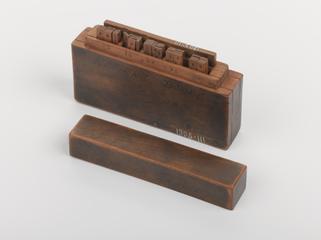
Napier's Bones
1690
Set of Napier's rods in boxwood case, made in England by an unknown maker, about 1690.

Foucault Pendulum for Demonstrating the Earth's Rotation
1988
Foucault pendulum designed by A.B. Pippard and built at the Cavendish Laboratory, Cambridge, including suspension, sustaining mechanism and bob

Sun-and-moon dial by Elias Allen
1607-1653
Sun-and-moon dial made by Elias Allen between 1607 and 1653 at his workshop, near St. Clement's Church, London. Engraved "Elias Allen fecit a Moone diall". It is callibrated for use at the latitude 51 1/2.

Carton of four Viagra (Sildenafil citrate) tablets, Sandwich, England, 1996-1998
1998
Carton of four Viagra (Sildenafil citrate) tablets, 50mg, with instructions, by Pfizer Limited, Sandwich, Kent, c. 1998. Anti-impotence drug which created a media storm in 1998.